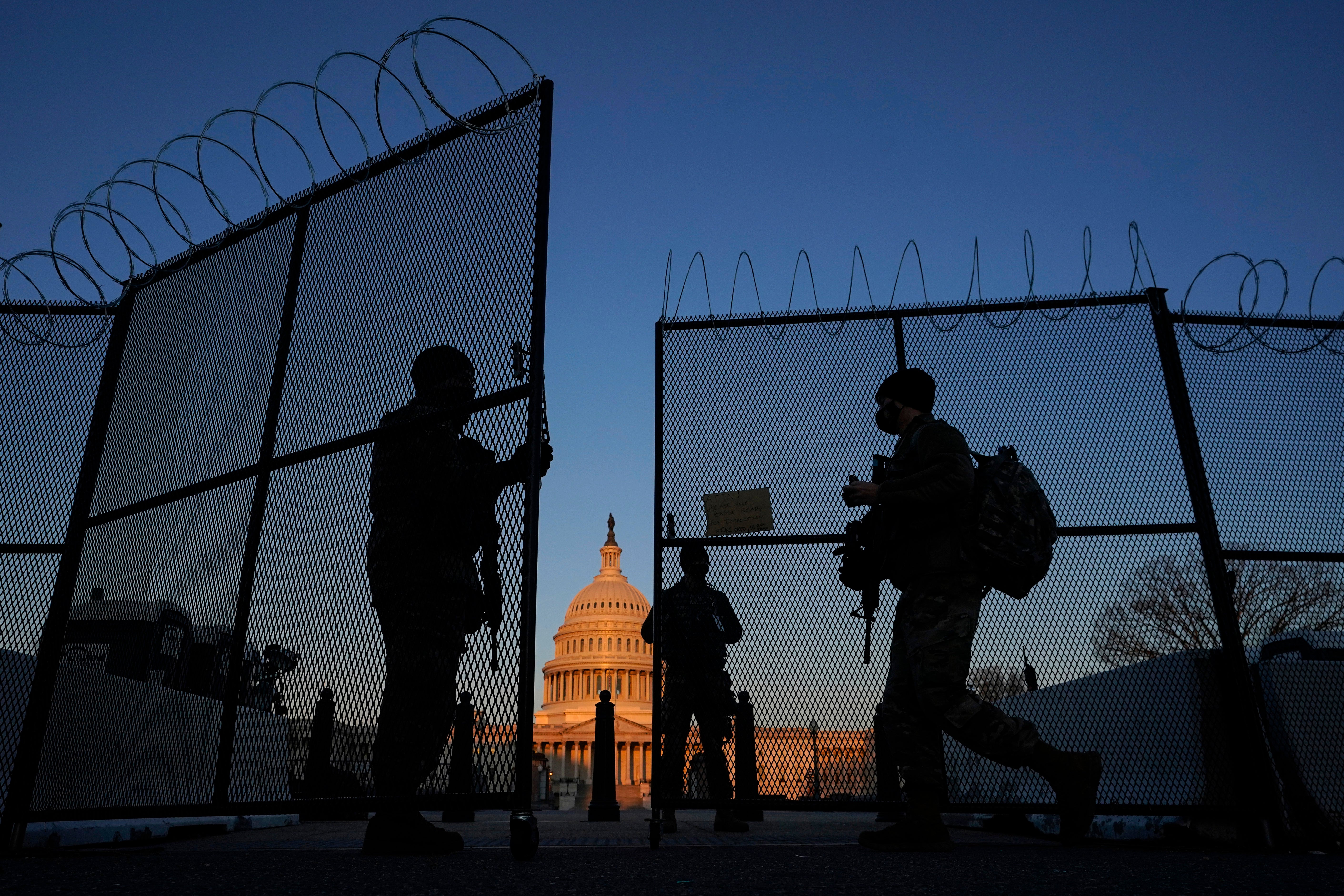Security officials to scale back fencing around US Capitol
Security officials are starting to scale back the perimeter fencing surrounding the Capitol

Your support helps us to tell the story
From reproductive rights to climate change to Big Tech, The Independent is on the ground when the story is developing. Whether it's investigating the financials of Elon Musk's pro-Trump PAC or producing our latest documentary, 'The A Word', which shines a light on the American women fighting for reproductive rights, we know how important it is to parse out the facts from the messaging.
At such a critical moment in US history, we need reporters on the ground. Your donation allows us to keep sending journalists to speak to both sides of the story.
The Independent is trusted by Americans across the entire political spectrum. And unlike many other quality news outlets, we choose not to lock Americans out of our reporting and analysis with paywalls. We believe quality journalism should be available to everyone, paid for by those who can afford it.
Your support makes all the difference.Security officials will soon start to scale back the perimeter fencing surrounding the Capitol in response to guidance from the U.S. Capitol Police that “there does not exist a known, credible threat" that warrants keeping the temporary barrier in place.
The fencing will be scaled back in two phases, Timothy Blodgett, the acting House sergeant-at-arms, said Monday in a memo to members of Congress
An inner perimeter of fencing will be moved closer to the Capitol building this week, providing access to nearby streets and some sidewalks. Strings of razor wire atop the fence will also be removed and bike racks will be placed strategically around each of the House office buildings. Blodgett said that an inner perimeter around the Capitol will remain in place as security repairs are made to the Capitol building.
During the latter part of March, the outer perimeter fencing will be removed and Independence Avenue and Constitution Avenue will be opened for traffic, Blodgett said.
How to protect lawmakers, while keeping the bucolic Capitol grounds open to visitors has emerged as one of the more daunting questions from Jan. 6, when a mob attacked the Capitol in a deadly insurrection. Lawmakers from both parties have decried the fencing as unsightly and beyond what is necessary, but security fears remain high.
Five people died after protesters stormed the building trying to stop Congress from certifying President Joe Biden’s election over Republican Donald Trump. The former president was impeached by the House for inciting the mob, and acquitted by the Senate
Thousands of National Guard troops also remain in place protecting the Capitol, but Blodgett said it is anticipated that the National Guard will “begin to reduce its posture at the Capitol in the coming weeks."
Lawmakers have described their unease at arriving for work each day in what can feel like a war zone. The absence of tourists snapping photos of the Capitol dome or constituents meeting with representatives is an emotional loss on top of coronavirus restrictions, they said. The security perimeter extends far beyond the Capitol itself through neighboring parks and office buildings.
The Senate Republican leader, Mitch McConnell of Kentucky, compared it to a combat zone in Afghanistan.
“I think we are way overreacting,” he said at a press conference.
House Speaker Nancy Pelosi D-Calif., said on ABC's “This Week" on Sunday that “you have to make sure you’re safe enough so those who are motivated by those misrepresentations do not think that they have open season at the United States Capitol."
“I myself have been one to say, let’s see what we can do with a minimum of fencing, but again, this is a security decision," Pelosi said.